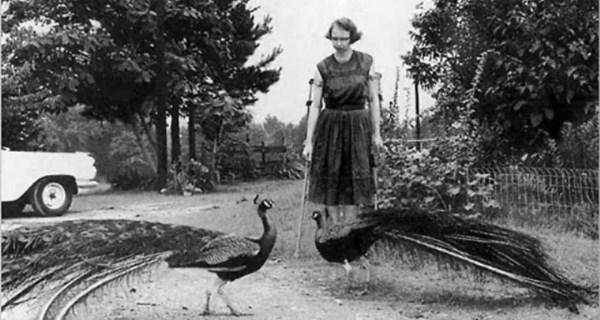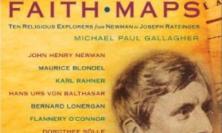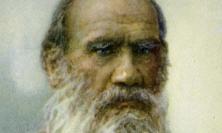Flannery O’Connor, who died on 3 August 1964, was a celebrated but divisive author whose stories are notorious for both their violence and their religiosity. Can her work speak to modern readers, or is it necessarily of her time? Michael Kirwan SJ considers this question, with a little help from James Joyce, René Girard and Quentin Tarantino.
Does Flannery O’Connor ‘translate’? O’Connor is one of the most striking and yet enigmatic of twentieth century Catholic writers. The spiritual conflicts so graphically –‘grotesquely’ – depicted in her fiction require us to make a decision about her ‘shock and awe’ approach. For her aficionados, the violence is justified, because its depiction is very closely at the service of O’Connor’s moral and spiritual imagination. For her critics, this higher purpose is not described sufficiently or convincingly, so there is no distinction, in the end, between her version of ‘Southern Gothic’ and the bloodbaths of, for example, Quentin Tarantino (who has indeed acknowledged O’Connor’s influence on him).
The heavy use of speech marks in the previous paragraph is deliberate. An international conference on O’Connor in Seville in June 2017 did not shy away from the ambiguities. The usual labels applied to O’Connor – ‘grotesque’, ‘gothic’, etc. – were scrutinised because of the possibility that these labels tell us less about O’Connor than about our own allergy to her society and its times (would a writer situated in New York be described in similar ways?). The conference was entitled ‘Andalusia in Andalucía’, a play on the fact that home for O’Connor during her later years was a farmhouse in Andalusia, Georgia, now host to the Flannery O’Connor-Andalusia Foundation (see andalusiafarm.org for details, including the online shop…). Few great writers have been so precisely located, geographically and culturally.
To ask again, therefore: how well does she translate? And how does her vision of vicious human fallibility, grace and redemption play out to a more traditional European (post-) Catholic context, namely southern Spain? The connection was strained at times: a number of the local participants regretted that the ‘Catholic’ label has negative traditionalist connotations for most Spanish intellectuals, creating a formidable barrier to the reception of O’Connor’s work. And yet, the ‘grotesque’ elements of her ‘Gothic’ writing, cruel yet darkly humorous, have affinities with the surrealist Spanish imagination.
O’Connor’s fiction is neither pretty nor consoling. Her stories deal head-on with religious fanaticism (Wise Blood, ‘The River’), with racism and xenophobia (‘The Artificial Nigger’, ‘The Displaced Person’), and with cynical misogyny (‘Good Country People’). Her short story, ‘A Good Man is Hard to Find’, depicts the execution of a family, shot dead in cold blood by an escaped criminal who rejoices in the nickname of ‘the Misfit’. As noted, Quentin Tarantino has cited O’Connor, and perhaps this influence clarifies the burning question: what distinguishes the horrific scenarios of O’Connor’s fiction from the gratuitous and seemingly nihilistic violence in Tarantino’s films?
An answer will draw, naturally, on the investigations of René Girard, the cultural theorist who uncovered precise and disturbing links between human violence and sacred transcendence: our readiness to make our lynchings and persecutions acceptable by re-describing them as sacrifices. In his first book on the European novel, Deceit, Desire and the Novel (1961), Girard distinguishes between ‘romantic’ and ‘novelistic’ fiction. Does a writer merely depict the process of conflictive desire and its corrosion of human relationships, causing them to descend into violence? Or does he or she reveal the hidden meaning of this vortex, thereby offering a possible escape, a ‘resurrection from the underground’? Only the second of these is truly effective in getting to the heart of human dysfunction, and pointing to the grace that alone overcomes it.
Girard would agree with O’Connor: only grace overcomes resentment. Both the problem and its solution are theological. ‘The Misfit’, for example, declares to the grandmother just before he shoots her that, ‘Jesus thrown everything off balance’, blaming God for the disruptions in his life that have turned him into a killer. Is this merely the self-rationalisation of a sick killer, or is he uttering some prophetic truth? In ‘The Artificial Nigger’, a damaged plaster effigy of a comic black man shocks the characters (Mr. Head and his grandson) into an awareness of merciful grace, making irresistible a comparison of the ‘icon’ of the black man with the figure of the Crucified One.
O’Connor wrote, intriguingly, that ‘the devil accomplishes a good deal of groundwork that seems to be necessary before grace is effected’. This is a plausible evocation of a kind of negative theology: O’Connor posits God as absence, in the cruelty and hopelessness of her narratives, where only the humiliation of proud individuals can open up the possibility of redemption. I propose an instructive contrast of O’Connor with another Catholic author, James Joyce. One contrast, of course, is that O’Connor was rooted in her Southern American geographical and cultural context, embracing a Catholic faith in which ‘dogma safeguarded mystery’; Joyce’s life and work, on the other hand, are a luciferian gesture of refusal of, and exile from, ‘my home, my fatherland or my church’ – the ‘nets’ which restrain free flight. Dogma is frequently present in the form of parody, bordering on blasphemy. Joyce’s protagonist, Stephen Daedalus in A Portrait of the Artist as a Young Man, proudly echoes Satan in declaring that, ‘I will not serve that in which I no longer believe.’
‘Evil’ in Joyce’s fiction is not a radical condition, but the result of suffocating social or historical constraints. In the opening story of Dubliners (1914), the narrator comments on the word ‘paralysis’: ‘it sounded to me like the name of some maleficent and sinful being. It filled me with fear, and yet I longed to be nearer to it and to look upon its deadly work’. O’Connor is attempting, one might say, a more fundamental examination of the human situation. Joyce and she operate, perhaps, on different levels of theological intensity – René Girard’s distinction again, between the ‘romantic’ writer, who describes and decries the suffocating external conditions which are the principal reason for the stifling of the human spirit, and the ‘novelistic’ writer, who engages on a deeper anthropological (or indeed theological-anthropological) level.
Girard’s distinction is useful, though in this instance I would distrust its neatness. Alongside and throughout the parody and blasphemy, Joyce deploys an acute theological sensitivity, which should not be underestimated. And the fact that O’Connor has a more positive religious view does not mean that she always manages to render this effectively or convincingly (i.e. without overt preaching; one critic describes ‘encountering the Sign of the Cross on every page’).
This can be shown by comparing the climactic passage of O’Connor’s ‘The Artificial Nigger’, and the final two stories from Joyce’s Dubliners collection, ‘Grace’ and ‘The Dead’. In O’Connor’s story, the relationship between an elderly man, Mr. Head, and his grandson, has undergone a traumatic rupture. These country people are visiting the city; Mr. Head is trying to cure the grandson of his curiosity about urban life (and in the process to reinforce in him a ‘poor white’ sense of racial superiority). But they have become hopelessly lost, and in an altercation with some of the locals Mr. Head panics, and denies all knowledge of the boy. This shocking incident shatters their relationship. They carry on walking through the strange city, not speaking to each other, until they happen upon a garden ornament, a plaster representation of a smiling black man. This is the ‘artificial nigger’ of the story’s title. Part of its face has been chipped away, and instead of grinning cheerfully, it is a face of agony. This vision mysteriously transfixes them both, and becomes an epiphany of reconciliation. The grandfather knows for the first time what a merciful absolution of fallibility feels like, while the grandson’s need for the reassurance and guidance of the elder overcomes his bitter resentment at being betrayed.
The episode is striking, but not subtle. The grandfather denying all knowledge of the child in front of an angry group of bystanders, and the unexpected reconciling impact of the plaster image of the black servant, are signposts of O’Connor’s Christian intention. Compare this with the treatment of grace in the final two stories of Dubliners. In the story ironically entitled ‘Grace’, Joyce depicts a parody of religious transcendence, in which a group of respectable middle-class Dublin men attend a retreat for businessmen. The Jesuit preacher offers them a vision of ‘salvation’ that mirrors their own respectability: it is a matter of honest bookkeeping, of keeping spiritual accounts, and humbly asking for forgiveness when the figures do not tally. Joyce is gentle in his satire, but what is on offer is the cheap grace of ‘bourgeois Christianity’ rather than a way out of the paralysis.
The finest and best known story of the collection, ‘The Dead’, concludes with the famous description of ‘snow falling all over Ireland’, upon the living and dead – and upon the grave of Michael Fury, the childhood sweetheart who still obsesses Greta, to the shocked anguish of her husband, Gabriel. This moment of painful separation is comparable to the distance that opens up between Mr. Head and his grandson: it is similarly resolved by an intimation of what reconciling love feels like, in the image of the snow that falls and covers. Not an overtly religious image, of course, with no promise of transcendence – except that Christ is, once again alluded to, in the crosses and thorns in the graveyard, covered by snow. Ironically, this is a more authentic rendition of ‘grace’ than the bourgeois consolation preached to the retreatants in the previous story which carries ‘grace’ as its title. Joyce’s treatment is the subtler, though it is of course unfair to compare him and O’Connor too closely, given the premature closure of her life and writing career.
I asked at the beginning of this essay whether O’Connor ‘translates’. Is her ‘Southern Gothic’ vision so closely tied to its post-war Georgian setting – put bluntly, are her characters and situations so weird – that it becomes inaccessible to a general readership? The US election of November 2016, and all it symbolises, might cause us to look with fresh eyes at O’Connor. Her stories depict vulnerable and fearful characters and their communities, under conditions of economic precariousness, bitter racial tension and febrile religiosity. And her world has not gone away. Indeed it asserts itself in the thirty per cent approval ratings, in voters who believe that Donald Trump speaks for them in their resentful alienation. The incomprehension and ineffectiveness of liberal and mainstream politicians – for ‘grotesque’ read ‘deplorable’ – indicates the extent of the divide which has now become manifest.
Flannery O’Connor herself has caused disquiet because of her ambiguous loyalty to her Southern white culture, and therefore to its racial limitations. Notable here is her refusal to meet James Baldwin, the writer and Civil Rights activist, in Georgia, because, ‘[i]t would cause the greatest trouble and disturbance and disunion … I observe the traditions of the society I feed on – it's only fair.’ It is hard not to read this as an indication of timidity and bad faith, but it is the utterance of a theological rather than sociological thinker. Her own fiction, thankfully, is much more creative and expansive in exploring both the challenge and the possibility of transformation, including racial relations. But she writes from ‘within the fray’: not as a liberal, deploring the backwardness of Southern culture, but as its child and product. And as a convinced Christian, she knows that the only true ‘Other’ to humanity is God, and that all other lines of demarcation are ‘artificial’. In Christ, there is neither Greek not Jew, slave nor free.
Michael Kirwan SJ lectures in Theology at Heythrop College, University of London, and is Director of the Heythrop Institute for Religion and Society.






